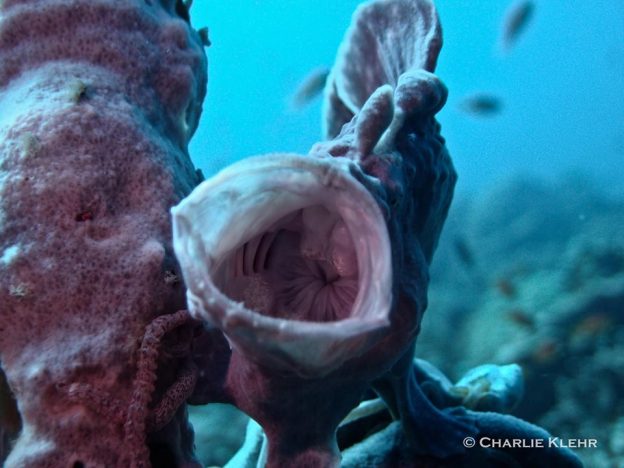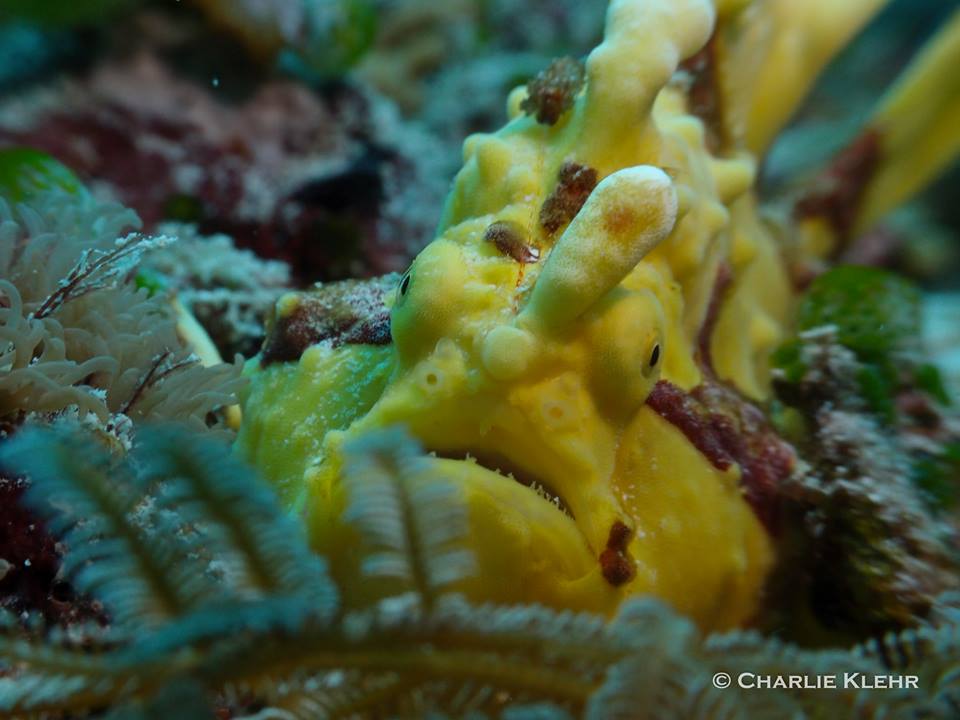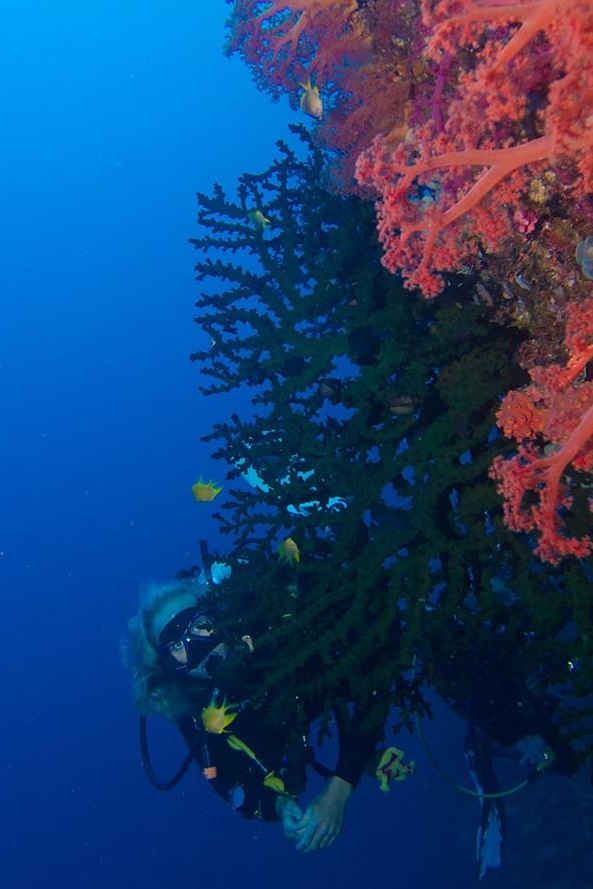So many people that come into our dive center have some form of prejudice towards the notion of diving our “house reef,” but actually the house reef we have in front of our resort is one of my personal favourite dive sites in Moalboal. Those snorkelers and divers willing to experience it for themselves will generally agree. One of the biggest appeals it has is that a lot of the time it is just your group there creating a rather unique experience; truly a gem “hidden in plain view” as the expression goes.
Being guided out to the reef wall by mooring lines in the shallows, you end up reaching the drop off for our incredible reef. The reef itself is packed with some of the most beautiful, healthy hard corals and anemones the area has to offer. Though through descending deeper you can see a vast array of colorful soft coral, big barrel sponges and gorgonian sea fans that are potentially home to some very special creatures such as: hairy squat lobsters, ornate ghost pipefish, robust ghost pipefish, giant frogfish, painted frogfish, sexy squat shrimps, peacock mantis shrimp, candy crabs, orangutan crabs and so on…

Ornate Ghost Pipefish

Sexy Squat Shrimp

Blue-ringed Octopus

Orangutan Crab

Hairy Squat Lobster
During the dive, you will likely be greeted by sea turtles which can be either green turtles or hawksbill turtles. Keep your eyes peeled as you’re surfacing or even if you’re already on the surface, during the day time when there is sargassum seaweed or coconut shells floating around, you might be able to spot the amazing sargassum frogfish looking for shelter near the surface.

To top it all off… As the sun sets over the horizon our house reef inhabits some of the famous mandarin fish that come and display the spectacle of their mating ritual for us, there really aren’t much better ways to start a night dive. Even blue-ringed octopus, and leafy scorpion fish tend to surprise us on night dives pretty regularly in addition to many other marine species that come alive after dusk.

So, let’s be rid of this negative connotation when you hear ‘house reef’… Quo Vadis House reef… Snorkel it, dive it, and be amazed!
Written by, Inge
Instructor and Dive Center Manager
Quo Vadis Dive Resort
Pictures: Inge Leys & Pernilla Sjöö








